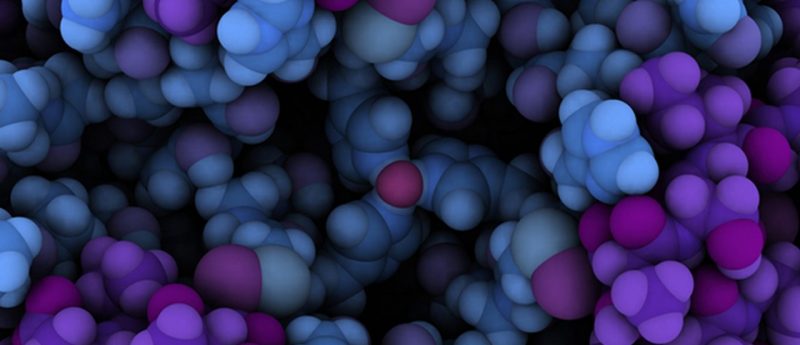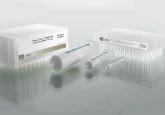Interview with Suma Ramagiri (AB SCIEX) on quantification of large molecules

Dr Su ma Ramagiri is Global Technical Marketing Manager, Quantitation and Metabolism in the Pharmaceutical & CRO Business Unit at AB SCIEX. Suma brings more than 12 years of experience in the analytical instrumentation field – including 5 years as a customer while working at Dr Reddy’s Laboratories in India, and GTx. Inc and ED Labs in Memphis, TN, USA. Suma obtained her BSc in Biochemistry, MSc in Organic Chemistry, and PhD in Analytical Chemistry and is currently pursuing a Business Management Degree. Suma leads innovative workflows in both traditional small molecules and growing segments in pharma, such as peptide/protein bioanalysis and biotransformation.
ma Ramagiri is Global Technical Marketing Manager, Quantitation and Metabolism in the Pharmaceutical & CRO Business Unit at AB SCIEX. Suma brings more than 12 years of experience in the analytical instrumentation field – including 5 years as a customer while working at Dr Reddy’s Laboratories in India, and GTx. Inc and ED Labs in Memphis, TN, USA. Suma obtained her BSc in Biochemistry, MSc in Organic Chemistry, and PhD in Analytical Chemistry and is currently pursuing a Business Management Degree. Suma leads innovative workflows in both traditional small molecules and growing segments in pharma, such as peptide/protein bioanalysis and biotransformation.
Could you tell Bioanalysis Zone about your current role at AB SCIEX?
By training I am a bioanalytical scientist with approximately 12 years of experience in analyzing complex biological samples using various techniques such as HPLC, GC–MS, LC–MS and NMR. My interests in analytical instrumentation led me to AB SCIEX, a market leader in LC–MS technologies. In my current role as a Global Technical Marketing Manager within the Pharma/CRO business unit, I collaborate with key thought leaders in the industry and a broad AB SCIEX team to develop and lead innovative workflows and solutions in both small and large molecule applications.
You have recently been working on large therapeutic peptide and small protein quantification without using tryptic digestion – what are the challenges you have faced?
A major challenge in therapeutic protein and peptide quantification is developing a selective and sensitive bioanalytical assay that accurately measures the compound of interest without overestimating or underestimating the drug concentration levels. This is very important during preclinical or clinical safety/efficacy testing. The gold standard has been ligand-binding assays but due to lack of specificity, this technique has been recently complemented with LC–MS. There are many case studies and data examples by various scientists from the pharma/biotech industry showing that hybrid LBA-LC–MS techniques can offer better quality data. Inherently, sample preparation for large molecule bioanalysis has been challenging and I believe this is where it all starts. We at AB SCIEX continue to push the limits to help solve challenging selectivity and specificity issues. SelexION™, a differential mobility spectroscopy device is a great example. Bioanalytical scientists have used SelexION to remove interferences and reduce background noise, which ultimately improved the bioanalytical assay performance statistics such as accuracy, precision and, most importantly, LOQ.
Another challenge in large molecule quantification without tryptic digestion is finding the most appropriate internal standard. Recently, Sigma-Aldrich came up with new product SILu™Mab, which is designed to be used as an internal standard for quantitation of monoclonal antibodies as well as Fc-fusion therapeutics in preclinical animal models. Bioanalytical LC–MS assays utilizing both SelexION technology and SILuMab offer advantages over traditional ELISA-based methods because of their superior specificity and sensitivity, and reduced matrix effects.
What advantages do high-resolution MS instruments offer over traditional techniques for the quantification of intact small proteins or peptides?
Over the past 4 years there has been a paradigm shift in bioanalytical quantification towards using MS. We can now get triple quadrupole-like quantitation with the same accuracy, precision and linear dynamic range as traditional MRM statistics. The main advantage of high-resolution MS instruments is the ability to see everything without the need for upfront MS method development. Any user can walk up to the system without prior knowledge of MRM and can confidently come back later to process the data. As a bioanalytical scientist, I see this as a tremendous benefit. Another advantage is the ability to decrease the background noise at UPLC speed and increase the limit of quantification significantly without the need for huge upfront sample preparation, which reduces cost/sample analysis. The ability to sum multiple charge states or multiple product ions increases the selectivity and specificity of assays with intact proteins or peptides. Both QTRAP and triple quadrupole systems are still the work horse platforms in regulated GLP labs for quantification, but I forsee more and more use of high-resolution accurate mass systems in discovery, development and preclinical laboratories.
Large molecule analysis by LC–MS is becoming a valid alternative to ligand-binding assays. How can it be used as a complementary technique to LBA?
LBA is a gold standard technique. Low equipment costs, negligible capital budget, sample throughput, ability to automate the sample preparation process, reading the results in a compact format and minimal analyst training are just a few attributes for the LBA platform. Not to mention some of the performance attributes such as sensitivity and ability to measure free drug. But expectations around patient safety and efficacy demands a more selective assay platform and in such cases hybrid LBA-LC-MS assays may be the way to go. One of the limitations of LC–MS analysis is vast sample preparation time. Having immunoprecipitation, either using generic or specific antibody, will help with the sample clean-up and LC–MS can bring all the benefits of further selectivity with either MRM quantification or high resolution quantification in addition to the ability to measure multiple components and even metabolites/catabolites. I am not sure if LC–MS will ever overtake the use of LBA but in future there will be pretty sizable portion of bioanalytical assays that involve LC–MS technology either as a standalone or hybrid LBA-LC/MS platform.
What are you excited about working on over the next year?
Recently, there has been a huge surge in biotherapeutic drugs within the pharma/biotech industry. Many different compound classes such as antibodies, antibody–drug conjugates, Fc-like fusion proteins, peptides and oligonucleotides have shown huge potential in treating cancer, autoimmune disorders, diabetes and inflammatory disease. These compound classes are now a major portion of the product pipeline within the pharma/biotech industry. These molecules are hugely complex, leading to complicated PK/PD models with limited knowledge on safety or efficacy in a preclinical model or, for that matter, in humans. I am delighted to be work with AB SCIEX research and development teams to decode some of the mystery behind these next-generation therapeutics, using next-generation tools and workflows such as SWATH Acquisition, SelexION technology and high-performing LC–MS technologies. I can’t wait to see how science and technology will come together to fight some our most deadly diseases and I am very excited to be part of this mission in collaboration with the pharmaceutical and biotech industries!





